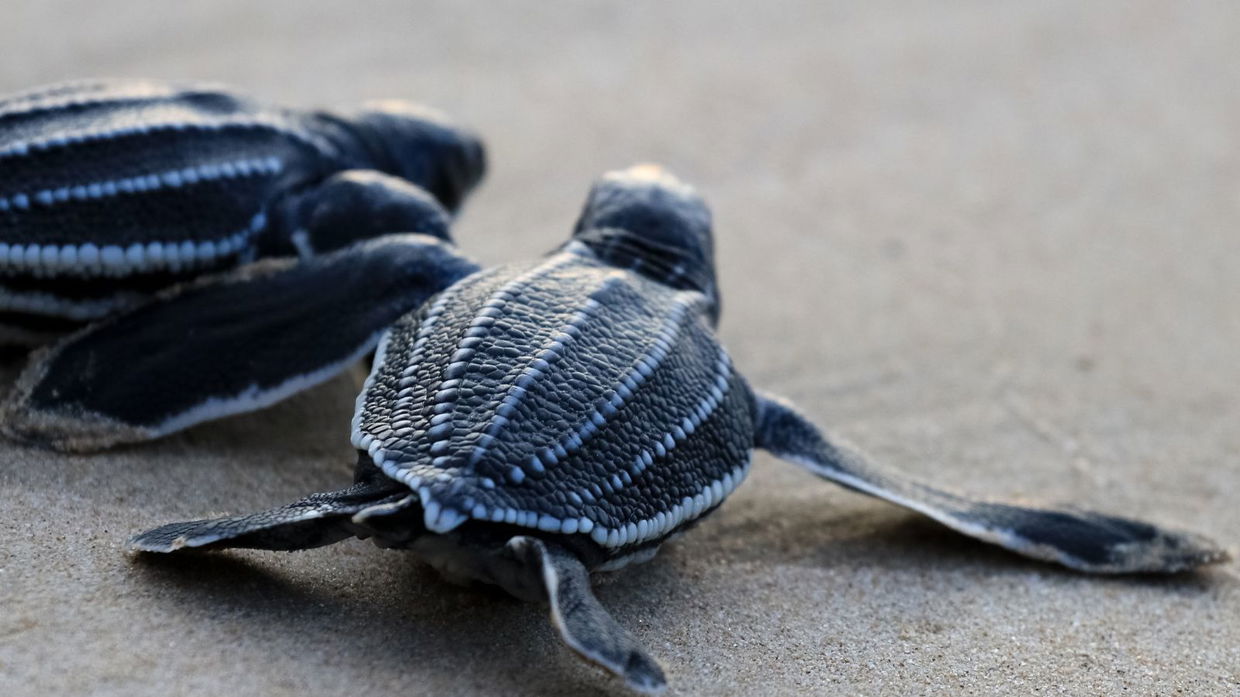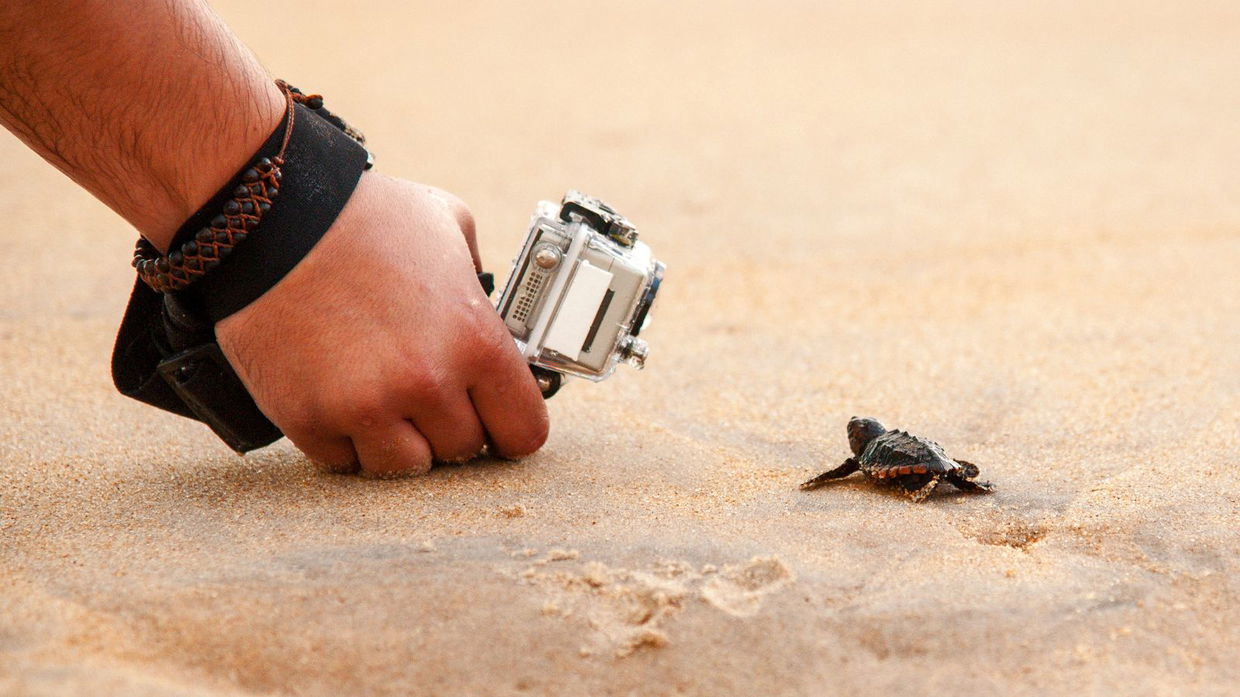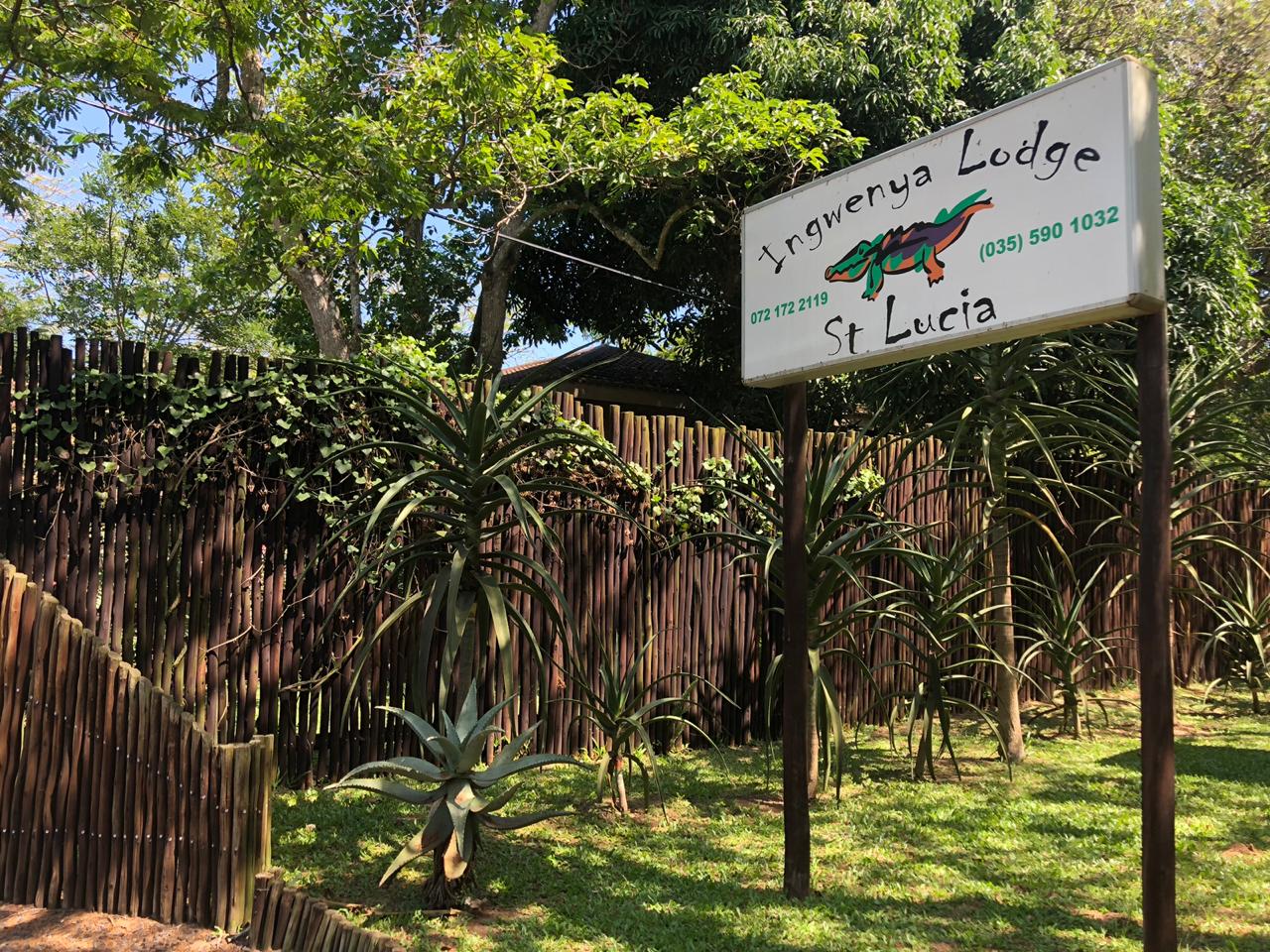December in St Lucia is full for a reason. Families travel from all over South Africa, cars line the streets, and every beach day feels like a shared event. It's festive, busy, and for many people, exactly what they want. But once the Christmas rush fades, something else happens. January arrives quietly – and St Lucia changes pace. The same warm ocean. The same green summer landscape. The same wildlife moving through...
Turtle Season in St Lucia – Night Tours, Nesting & Hatchlings
Evenings in St Lucia have a certain rhythm. The air is warm, the sea hums just beyond the estuary, and somewhere along the coast, the first leatherback turtle hauls herself out of the surf. From the deck at Ingwenya Lodge, guests often watch the sky darken and know that, down the beach, one of the ocean’s oldest rituals is beginning.
Between November and March, St Lucia’s protected shoreline becomes the nesting ground for two ancient travellers – the Leatherback and Loggerhead turtles. These giants return year after year to the same stretch of sand within the iSimangaliso Wetland Park, laying their eggs beneath the stars. It’s the heart of turtle season, and one of the most extraordinary natural spectacles on South Africa’s east coast.
From our lodge, perched on the edge of the park, it’s easy to join a night turtle tour and witness this quiet drama unfold. You’ll leave after dusk, guided through dunes and coastal forest until the ocean comes into view – and if you’re lucky, you’ll see her there, moving slowly under moonlight.
It’s hard not to feel something shift inside when you realise how far she’s come and how perfectly this coastline still welcomes her home.
A Rare Natural Spectacle – Right Here in St Lucia
Each summer, the beaches around St Lucia turn into something quietly extraordinary. Two ancient travellers arrive from the open sea – Leatherback and Loggerhead turtles – following routes they’ve known for generations. No maps, no sound, just memory written somewhere deep inside them.
They come to nest on the same stretch of sand that edges our town, part of the iSimangaliso Wetland Park, one of Africa’s last strong turtle sanctuaries. Watching it for the first time feels less like seeing wildlife and more like stepping into an old story that never stopped being told.
The Leatherback is the larger one – soft-shelled, ridged, almost prehistoric in shape. When she moves, you can hear her breath and the slow drag of her flippers. The Loggerhead follows later in the season, smaller, with a burnished shell that catches what little moonlight there is. Both dig, lay, and cover their eggs with patient precision before disappearing again into the waves.
From Ingwenya Lodge, the nesting beaches are close enough to feel part of daily life. You might hear the ocean from your veranda and think of them out there, working in the dark. And maybe that’s the wonder of it – knowing the wild still keeps its own rhythm, even when we’re not watching.
Watching it for the first time feels less like seeing wildlife and more like stepping into an old story that never stopped being told.
When to Visit – Turtle Season Explained
Turtle season begins when the first summer storms roll in, usually around 1 November, and runs until the end of March. It’s the hottest, most vibrant time of year in St Lucia – long days, late sunsets, and warm evenings when the air hums with insects and the sea never really cools. It’s also the time when the beaches come alive after dark.
From November to January, the big females come ashore to nest. Each night brings new tracks on the sand, sometimes only a few metres apart. By January and February, the focus shifts – the eggs start to hatch. Tiny hatchlings break through the surface and scramble towards the light reflecting off the waves. It’s over in minutes, but it’s something you never forget.
Because this all unfolds in South Africa’s summer holiday season, it’s the busiest period in St Lucia. Families fill the town, the estuary is dotted with boats, and the atmosphere is lively. For guests at Ingwenya Lodge, the convenience is simple – you can spend your mornings exploring the park, relax through the heat of the afternoon, and join a night turtle tour right after dinner.
If you visit later, in February or early March, it’s quieter. The nights are cooler, the crowds fade, and you stand a good chance of seeing the last hatchlings making their run for the sea.
It’s over in minutes, but it’s something you never forget.
What Happens on a Night Turtle Tour
A night turtle tour isn’t just another excursion – it feels more like joining a quiet procession. Guests are usually collected from Ingwenya Lodge around sunset, when the air begins to cool and the light turns soft over the estuary. The drive takes you through the Eastern Shores of iSimangaliso, past wetlands and coastal forest where bush babies cry and fireflies drift through the reeds.

Once the tyres touch sand, lights go off. Only the guide’s red torch moves across the beach. It can take a while before anything happens. Some nights the tracks appear almost immediately – long, deliberate lines etched in the sand by a turtle that has already climbed the dunes. Other nights you wait, listening to the surf and the wind moving through the grass. Then, suddenly, there she is. A dark shape at the edge of the tide, pushing her way up the beach.
Guides keep strict rules: no flash photography, no noise, no approaching until she’s finished laying. You stand back, eyes adjusting, and watch her work with slow determination. When the eggs are covered, she rests for a moment before dragging herself back into the sea. The whole process takes about two hours, maybe more.
By the time you return to the lodge, it’s late. The town is quiet, and the estuary lies still under a moon that seems larger than before. Most guests say very little on the drive back – it’s that kind of experience. You don’t really talk about it; you just hold on to it for a while.
Once the tyres touch sand, lights go off. Only the guide’s red torch moves across the beach.
Hatchlings and New Beginnings
By late summer, the beaches tell a different story. The deep nests that once held eggs now begin to stir. Under the sand, a hundred tiny turtles push upward together, breaking through in waves. It usually happens at night, though sometimes just after dawn when the light is soft and the beach is still empty.

If you’re lucky, your tour might coincide with this moment. Guides scan the dunes for fresh indentations – a faint hollow where the surface has collapsed. Then, almost suddenly, the sand moves and a small head appears. Within minutes, the ground ripples with motion as the hatchlings fight their way to the surface and start their run toward the ocean.
Each one faces the same race – a short stretch of beach that can feel endless. Ghost crabs wait near the waterline, gulls circle above, and the surf keeps calling them forward. You find yourself holding your breath for creatures smaller than your palm.
From Ingwenya Lodge, guests often hear about it the next morning – word travels fast in St Lucia when the first hatchlings of the season appear. Some people even book their return stay in February or early March, just to witness it in person.
It’s hard not to think about how the cycle keeps repeating, year after year. The mothers leave, the young return, and somehow the beaches remember exactly where to welcome them back.
You find yourself holding your breath for creatures smaller than your palm.
Conservation and Respect
What happens on these beaches looks effortless, but it isn’t. The turtles have been doing this for millions of years, yet every season feels like it could be their last if we’re not careful. Here in St Lucia, the nesting grounds fall inside the iSimangaliso Wetland Park, a protected stretch of coast where conservation comes first.
Out on a night tour, you notice how different it feels. Lights stay dim. Voices drop without anyone asking. Guides move slowly, explaining why white light blinds a turtle or why footprints near a nest can collapse the sand. It’s not about getting the best photo. It’s about giving her space to finish what she came here to do.
Each permit, each tour group, supports the people who protect these shores – the rangers who walk the beaches at night, the researchers counting hatchlings, the community members who’ve learned that a living turtle is worth more than a harvested shell. Their work keeps the cycle intact.
At Ingwenya Lodge, we often talk with guests after they return from a tour. There’s always a moment of silence first. Then someone says how they didn’t realise how much patience it takes just to stand back and watch. Maybe that’s the real lesson here – that caring for wild places begins with knowing when to step aside.
It’s not about getting the best photo. It’s about giving her space to finish what she came here to do.
Planning Your Visit
Turtle season runs through the heart of summer, so the nights are warm and the roads alive with visitors heading for the coast. Tours leave from St Lucia once the tide is right, usually after sunset, and return well after midnight. Because spots are limited, it’s worth booking ahead – especially from December to mid-January, when both nesting and holiday traffic peak.

A few small things make the experience easier. Wear closed shoes; the sand can still hold the day’s heat. Bring a light jacket for the drive back. Avoid bright colours, perfumes, or anything reflective. If you have a camera, switch off the flash completely. The guides will remind you, but it helps to know before you go.
Most tours welcome children from about eight years and older. Younger ones usually find the hours too long, though families often plan an early dinner before heading out. From Ingwenya Lodge, it’s simple – guides collect you here or nearby, and you return straight to your room without having to drive tired.
If you’re spending a few days in town, it’s worth pairing a turtle night with other local experiences. Try a hippo and croc boat cruise on the estuary, a Cape Vidal day trip, or a birding tour with Ian Ferreira. Each adds a different side to the same story – the way land and water keep shaping life around St Lucia.
Because spots are limited, it’s worth booking ahead – especially from December to mid-January.
Where to Stay – Your Base at Ingwenya Lodge
When the night ends and the sea quiets down again, there’s nothing like returning to a space that feels close to it all. Ingwenya Lodge sits right on the edge of the iSimangaliso Wetland Park, surrounded by the sounds and light of nature. From the verandas, you can see the estuary stretching out towards the ocean – the same water the turtles cross before finding their way to shore.

Each of our six self-catering units carries the name of a river that feeds the St Lucia estuary – Mpate, Nyalazi, Hluhluwe, Mzinene, Mkuze, and Mfolozi. It’s our small tribute to the lifeblood of this place. Families often stay here for the space; couples come for the quiet. And sometimes, guests bring their pets along too – because even four-legged travellers deserve a holiday.
After a night turtle tour, most people arrive back in the early hours, still half-awake, sand on their shoes and salt in their hair. It’s easy to settle on the deck with a cup of coffee and watch the first light drift over the wetlands. You might spot hippos grazing below or hear the first call of a fish eagle echoing through the mist.
That’s the rhythm of Ingwenya – wild and calm at once. A base where adventure and rest sit side by side, waiting for you to pick which one comes next.
From the verandas, you can see the estuary stretching out towards the ocean – the same water the turtles cross before finding their way to shore.
Reflection
By the time March rolls around, the beach feels different. The heat has eased off a little, and the evenings don’t hum quite as loud. Most of the nests have already opened. What’s left are faint hollows in the sand – soft patches you might walk past without noticing. Somewhere beyond the breakers, those same hatchlings are drifting in the current, learning the pull of the tide. You think about how small they were, and how far they have to go.
Mornings at Ingwenya Lodge follow their own rhythm too. Someone boils the kettle, the mist drifts off the estuary, and talk usually turns to the night before. Guests describe how still it was. How the turtle didn’t seem afraid of them, only focused. How the sound of her flippers stayed in their heads long after the drive back.
There’s a calm that settles here once you’ve seen it for yourself. You notice small things more – the smell of wet earth after rain, the low call of a fish eagle at first light, the way the sea always seems close even when you can’t see it.
Maybe that’s what brings people back each year. Not just the promise of seeing turtles, but the feeling they leave behind – a quiet reminder that the wild still moves on its own time.
Further Reading
Ingwenya Lodge is a family-run self-catering lodge on the outskirts of St Lucia, nestled against the iSimangaliso Wetland Park (South Africa's first UNESCO World Heritage Site). The lodge's six units each have fully equipped kitchens and modern comforts, and the property offers panoramic views of both the St Lucia estuary and the Indian Ocean. The setting is tranquil – hippos often graze on the lawns at night – giving guests a genuine...
When you book a self-catering lodge, sharing a braai is the last thing you want. At Ingwenya Lodge, every unit has its own private braai, giving guests space to relax and cook in their own time. Families like the peace of fenced gardens, couples enjoy the privacy, and groups gather on decks with sea views.







Share This Post